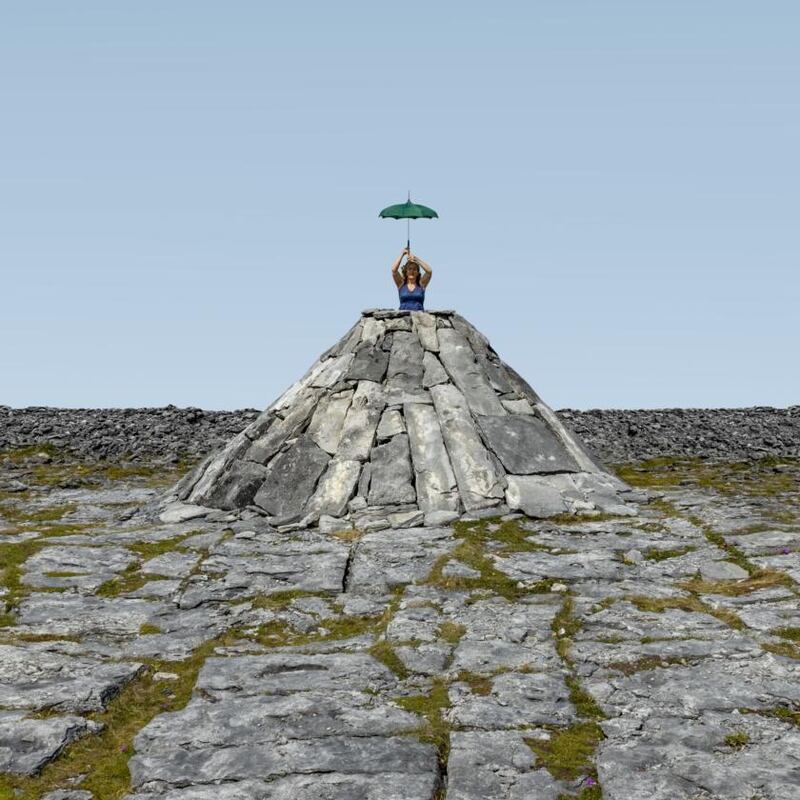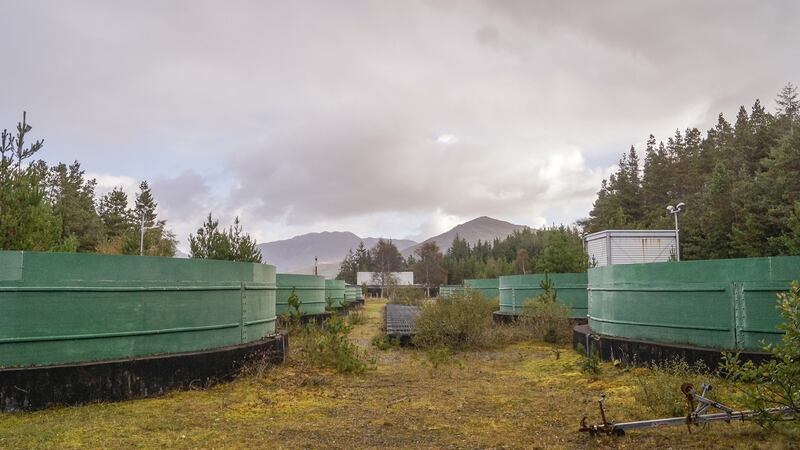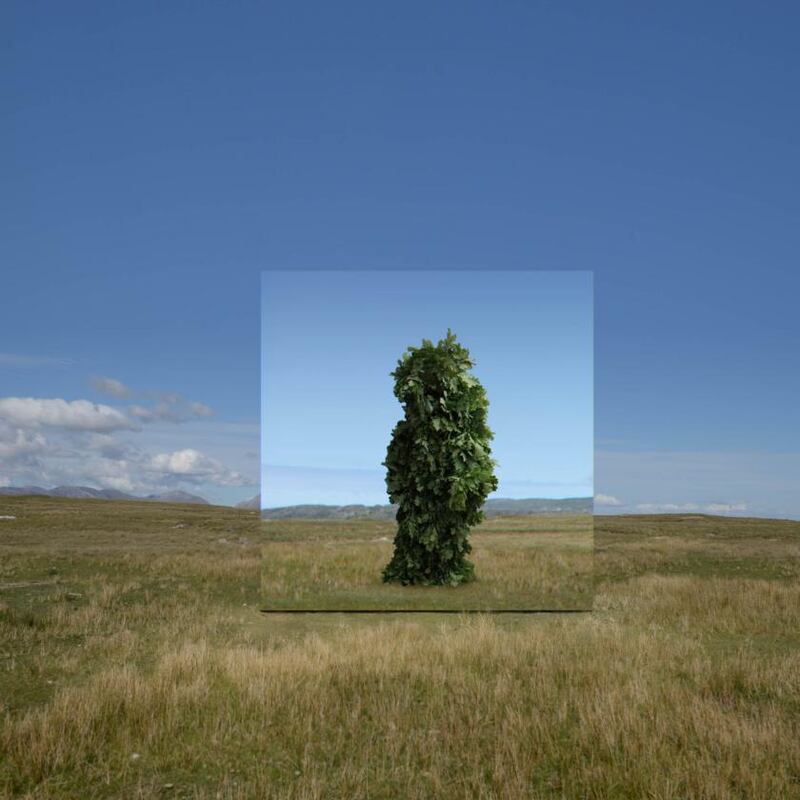There’s always been a touch of the wild west – in the best possible sense – and edge-of-the-Atlantic to Galway International Arts Festival. This year, postponed from its usual July slot to autumn on foot of Covid-19, several large projects in the county form a distinct thread.
Was this flow out of town accidental, planned or serendipity? “A combination of all,” says GIAF artistic director Paul Fahy. “We’ve a history of using non-traditional spaces imaginatively, to make theatres or galleries or whatever. We’ve had to create spaces out of necessity, and while things have improved, and we’ve theatres now, it’s still become, over the years, one of the defining elements.
“We’re 43 years old this year, and traditionally the festival’s two biggest venues are a tent in a field and an imagined space, that we hope we’ll be able to find and adapt into a great gallery. And we’ve always loved using Galway city, be that someplace as obvious as Eyre Square to build a stage, or Spanish Arch or the streets themselves, to animate the city. We’ve used the county previously, but we’ve more in the county this year.”
Its setting, a city on the edge of Connemara and the Atlantic, has long been an appeal of GIAF for visiting audiences and artists, as well as those at home. “That’s always been captivating for many who come to Galway, surprised by its geography and beauty.” So despite technical and production challenges creating work in remote places, “I’d always be looking for ways to embrace what we have on our doorstep.”

Happy Days on Inis Oírr
“We couldn’t have gone any further west this year than Inis Oírr with Sarah Jane Scaife and the Abbey,” observes Fahy. Samuel Beckett’s Happy Days, as Gaeilge Laethanta Sona translated by Mícheál Ó Chonghaile, sees Bríd Ní Neachtain and Raymond Keane directed by Scaife, in a stony “field” in the wilds of the smallest Aran Island. This is a change-up for Scaife and Company SJ, long associated with city Becketts, and a massive undertaking, building what looks like a new-ancient stone burial tumulus – Winnie’s mound, emerging from the stone at Creig an Staic (literally, field of rock).
Scaife describes watching designer Ger Clancy and islanders Máirtín Stiofán Seoige, Máirtín Celine Seoige and Thomas Noel Sharry build the mound, choosing and shaping the rock to fit the space. “It would seem impossible to find the giant jigsaw piece of rock that would work, but they did each time. It was a weekend I will never forget. All of us in this desolate field finding a rhythm and language of creativity together, recreating the image anew from a landscape that’s millions of years old.”
A photographic, sonographic and videographic exhibition in Áras Éanna arts centre on the island will document the process of making and building Laethanta Sona, including portrait photographs of Inis Oírr women.
“Three walls” of Creig an Staic, says Scaife, “are made by man, beautifully constructed according to a specific pattern. The last wall is constructed of rocks thrown up by the power of the sea. It’s like a metaphor for our short time in this world: the attempt at order on three sides and the sheer chaos of nature on the sea wall.”
Fahy describes walking across the island from the ferry, through “a little grassy boreen with high walls, that just opens out at the expanse of flat rocks, following the lines of rock into the sculpture that is the mound. It looks like it belongs there. Then, the line of the top of the stone wall, and behind that a stone beach, then the sheer expanse of the Atlantic.”
Weather’s a risk, of course, but “a lot of our audiences over the years, they’re robust, and know what Galway weather can hold”. Those without Irish should be fine (“maybe read a synopsis beforehand”) and the trip to the island, and the incredible setting and performances will carry audiences. It’s timed around ferry day-trips: “That’s going to be a brilliant day out.”

Broken Vessels in a disused hatchery
Fahy envisages audiences having “an extraordinary couple of days” combining Inis Oírr with Connemara. There’s a hidden place in Lough Inagh Valley, an hour from the city. “I was so surprised, it was absolutely not what I was expecting. The first time I saw it, it looked like something in the Hollywood Hills, that James Bond would fly over in a helicopter to find some kind of goings on.” The Scott Tallon Walker-designed former salmon hatchery isn’t visible from the road, and these days is home to Interface studio and residencies, run by visual artist and musician Alannah Robins.
Broken Vessels, a site-specific, international collaborative project curated by South African artist Brent Meistre, sees three Irish and three South African artists responding to the hatchery structures. “They’re just big green tanks,” but, says Fahy, “they’ve a sculptural quality, these abandoned vessels in the middle of this stunningly beautiful valley.”

Mirror Pavilion in the bog
Moving along, the setting for Mirror Pavilion too was carefully chosen, following many Connemara visits with associate producer Declan Gibbons and artist John Gerrard: the site where Alcock and Brown reportedly landed after the first transatlantic flight.
Gerrard’s installation Mirror Pavilion, Corn Work, was a city centrepiece near the Claddagh for last summer’s GIAF, as part of Galway 2020. Leaf Work, its second iteration, planned for September 2020 and scuppered by Covid, is now finally coming to Derrigimlagh Bog in Connemara. This is an even more challenging build than last year, for production manager Adam Fitzsimons, in the middle of a sensitive 4,000-year-old bog, where everything has to be done manually. Three mirrored sides and roof create a reflection-portrait, ever changing with the weather of the landscape around it. The fourth side, a high-resolution LED wall, unfolds a lament by a lone melancholic virtual character clad in oak leaves, on screen, in a virtual version of the same landscape. “All John’s work comes back to climate change,” observes Fahy. “This choreography is a lament for the rising temperatures of the ocean.”
“We wanted an extraordinary place, a place of beauty,” but also practical, with a nearby car park. The gleaming cube sounds as if it’ll be quite the sight to come across in the middle of a bog near Clifden.

Fíbín’s Cogadh na Saoirse
On the way back from a GIAF Connemara jaunt, “they can take themselves off for the evening to see Fíbín’s Cogadh na Saoirse [War of Independence] at Baile na hAbhann”. Their first show since Fíbín became company-in-residence for three years at the Irish-language An Taibhdhearc in Galway city, will be outdoors at their base beyond Spiddal, where last year they memorably staged a drive-in new play, Fiach.
Fíbín Teo is constructing multiple stages for this promenade show, a visual spectacle with the big house, country hall, pub, and fairground as settings for stories and perspectives on the war, written and directed by Philip Doherty. With a large ensemble cast including Julie Feeney and Seán T Ó Meallaigh, it’s accessible with or without Irish.
Admiring Doherty and Fíbín’s work and ambition,Fahy says now feels like an exciting time, with “a sense of fire under the Irish language and theatre again, which might be reimagining itself”.
Branar’s Sruth na Teanga
On the other side of the city, in the former Galway Airport’s disused terminal, another epic is unfolding, again. An immersive, intimate journey through the story of the Irish language – from the Fianna, though Ireland’s Golden Age and the Famine – Sruth na Teanga was created by Branar Theatre for all age groups (and all levels of Irish and English) as part of Galway 2020. Marc Mac Lochlainn’s ambitious show, with live performance, puppetry, animation and an original score, opened little more than a wet weekend before the pandemic closed it in March 2020.
The good news is that Branar are now remounting it for GIAF, “relishing the opportunity to demonstrate that theatre for children and families can be of a significant scale and feature within the programme of the country’s leading arts festival. It also allows us reflect the legacy of the significant investment by Galway 2020 and support of Galway’s local authorities for the production, continues to benefit the community,” says Branar executive producer Joanne Beirne.
Visiting the former airport in 2020 just as Sruth was coming together, two things seemed obvious: how the innovative, immersive show would make a fantastic longer-term cultural asset for the area, and also, the great possibilities of the former airport for expansive creative work.
And, aside from GIAF shows outta town, others find a way to get away virtually. Colm Hogan’s filmed version of Druid’s The Seagull [After Chekhov], by Thomas Kilroy and directed by Garry Hynes, live outdoors at Coole Park this month, will show digitally during GIAF. Or go to Connemara while sitting by the Corrib in the city, via Brú Theatre’s Ar Ais Arís, a virtual reality theatre experience directed by James Riordan and inspired by writers Máirtín Ó Cadhain, Pádraic Ó Conaire and Nuala Ní Dhomhnaill, exploring emotional journeys of migration.
Galway International Arts Festival, August 28th-September 18th giaf.ie












